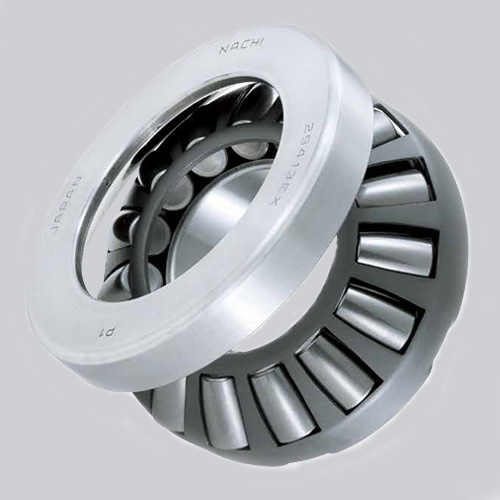Thrust roller bearing

Thrust roller bearings are used to bear axial and radial combined loads mainly, but the radial load shall not exceed 55% of the axial load. Compared with other thrust roller bearings, this type of bearing has a lower friction coefficient, higher speed, and has self-aligning performance.
1. Selection and control of tolerance for thrust roller bearing chamber: The thrust roller bearing should rotate flexibly without any obstruction after being pressed into the thrust roller bearing. If there is obvious inflexibility in rotation, it indicates that the size of the shaft is too large and the tolerance needs to be lowered. If there is a noticeable "rustling" feeling when the thrust roller bearing is pressed into the shaft and rotated by hand, it may be due to excessive tolerance or poor roundness of the shaft. So when controlling the tolerance of the shaft and thrust roller bearing chamber, it is also necessary to control the roundness. Many domestic manufacturers only control the tolerance and do not control the roundness.
2. Assembly method of thrust roller bearings: As thrust roller bearings are high-precision products, improper assembly can easily cause damage to the grooves of the thrust roller bearings, resulting in damage to the thrust roller bearings. The thrust roller bearing should have a dedicated mold during assembly and cannot be knocked randomly. When pressing the shaft, only the small ring can be subjected to force, and when pressing the large ring, only the large ring can be subjected to force. During assembly, it is required to use air pressure or hydraulic pressure. The upper and lower molds should be in a horizontal state during press fitting. If there is any inclination, it will cause damage to the groove of the thrust roller bearing due to force, resulting in a rattling of the thrust roller bearing.
3. Prevention of foreign objects during assembly: When installing the thrust roller bearing on the rotor for dynamic balancing, it is easy for iron filings generated during dynamic balancing to enter the interior of the thrust roller bearing. Therefore, it is recommended to perform dynamic balancing before installing the thrust roller bearing. Some manufacturers apply some oil or grease to the thrust roller bearing chamber for lubrication during assembly, but it is often difficult for operators to control the amount properly. If there is a large accumulation of oil or grease in the thrust roller bearing chamber, it is easy for it to enter the interior of the thrust roller bearing along the shaft when it rotates. It is recommended not to apply oil or grease to the thrust roller bearing chamber. If it is necessary to do so, it is necessary to control the accumulation inside the thrust roller bearing chamber.
4. Prevention of paint rust: The characteristic of paint rust is that it is more common in sealed motors. The motor makes a good sound during assembly, but after being stored in the warehouse for some time, the abnormal noise of the motor becomes very loud. Removing the thrust roller bearing causes serious rusting. Many manufacturers used to think it was a problem with the thrust roller bearings, but through our continuous promotion, the motor factory has realized that the main issue is with the insulation paint. The main reason for this problem is that the acidic substances evaporated from the insulation paint form corrosive substances at a certain temperature and humidity, which corrode the groove of the thrust roller bearing and cause damage to the thrust roller bearing. This problem can only be solved by selecting good insulation paint and assembling it after drying and ventilating for a period of time.



